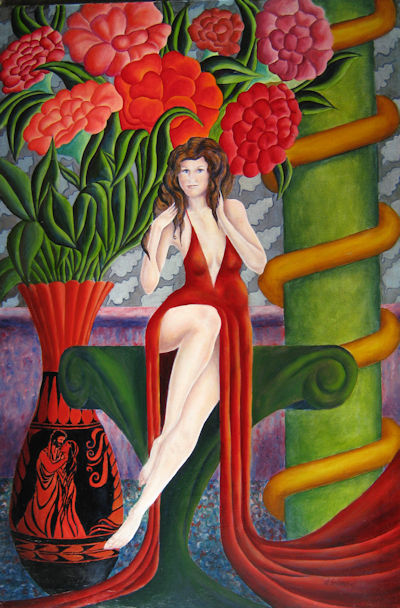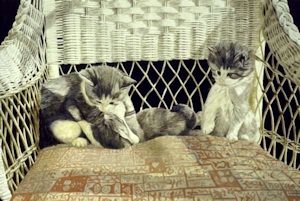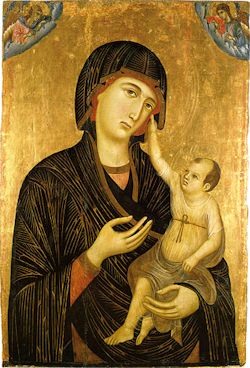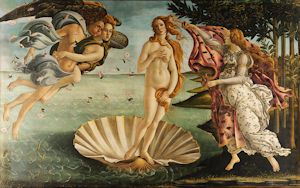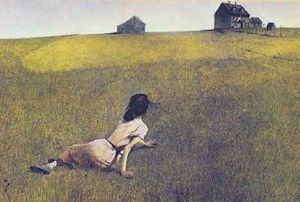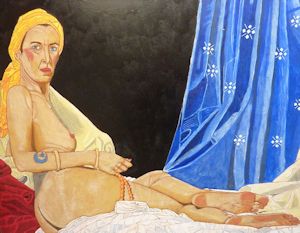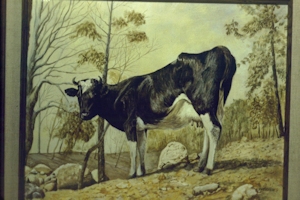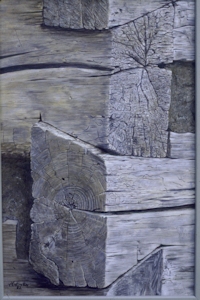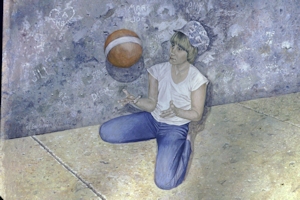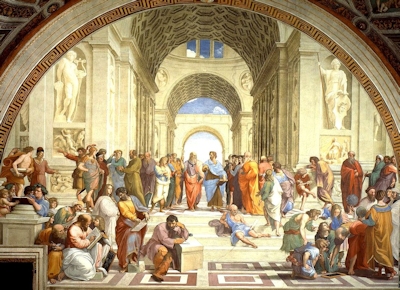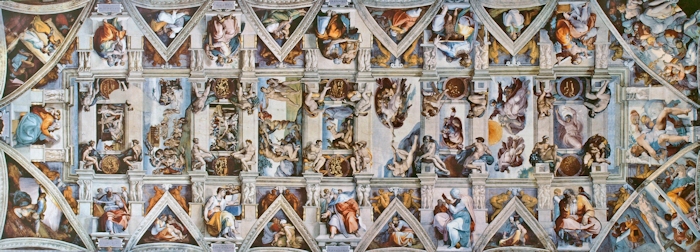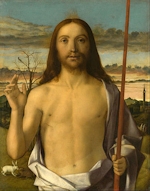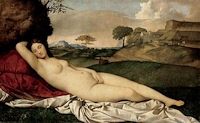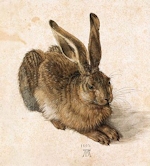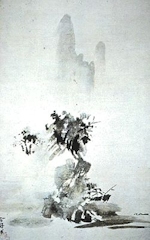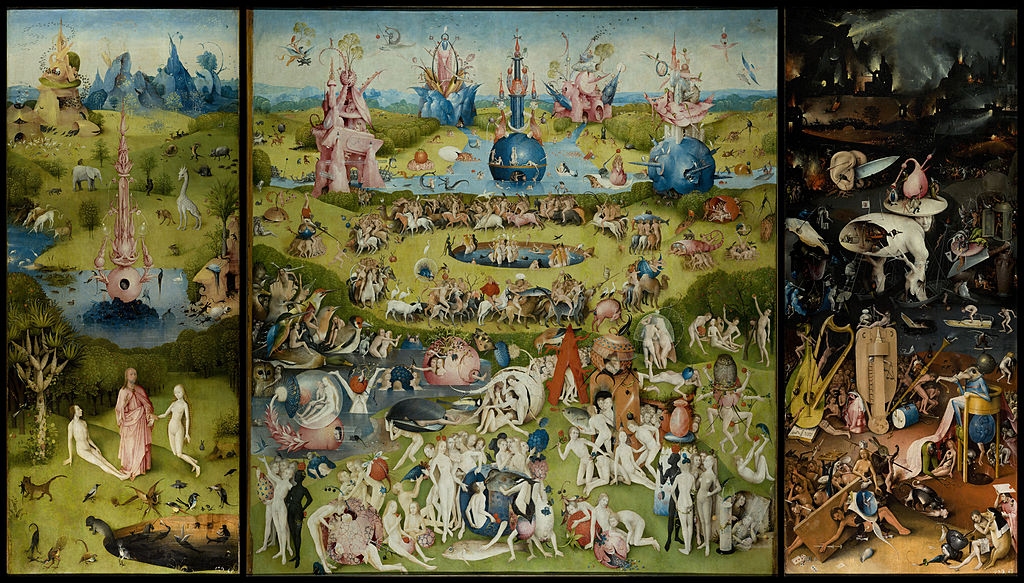|
John's Blog
Tuesday, July 19 2016
Tuesday, July 05 2016
The painting "Venus of the Pickup" was created from an observation I made some time back. The observation was of different types of women. Perhaps you will agree or disagree but this is my take on what I think is interesting. There are many women, living mostly in suburbia, who spend hours a week as well as a good deal of money on gyms and diets. Checking scales and dress sizes weekly. All this to maintain a good figure so they can be a trophy for and attractive to their "workaholic" husbands. They enjoy good food but limit themselves to salads and diet drinks. They drink white wine or light beer. They like the man in their lives to wear slacks and either a dress shirt or pull over golf shirt and to drive some sort of luxury sedan. Then there are the others who have a figure any woman would kill for but don't do anything but drink any beer they wish, smoke menthol cigarettes and like to eat fast food at least once a day or corn dogs at Sonic. They never worry about weight and feel best in tight jeans, tee shirt and boots. As for the men in their lives they prefer one who drives a pick up truck, also wears tight jeans with probably work boots and at times a nail belt. Thinking of this caused the birth of "Venus of the Pickup." Here is a beautiful slender nude woman in the back of a pick up truck. She is in an almost classic pose. This brings up the background.
The background for this painting. Is from two different paintings by Francois Boucher done around 1749. He was a French Rococo painter and a sort of court painter for King Louis XV and Marquise de Pompadour. I felt this was fitting since he painted voluptuous nudes then in setting of the time and this was one or our times. The final note on this was while it was hanging in a gallery a doctor saw it and almost immediately saw the connection to the license plate of FB-1749, a reference as a tribute to Francois Boucher. He bought it on the spot! It is 24 x 18 inches and now hangs in his art collection. To view other paintings that are still for sale please visit the "Paintings For Sale" page or to by prints visit the "Prints For Sale" page. Friday, June 24 2016
Seascape This print was made from an original oil painting, as were the other lithographs. It was printed in an edition of 1000. I painted this as a sort of tribute to the sea. I grew up near water and have sailed many times in a boat I once had. It is also more from my time on the Northern California coast. I had many good times drinking wine and eating cheese on small beaches below cliffs that abound on the coast north of San Francisco. Then there was the year I owned a sloop and sailed the USA east coast from New York to Florida but that is a story for another time. [grin] With the painting I wanted to create an almost uniform pattern to the waves that gives a sense of distance but also a sense of rhythm that I always see when watching waves hitting the shore. I used my "swirly" style to create an almost graphic look. The original was sold some time ago. The print is 9.25 x 20 inches with a white boarder for matting and framing signed and numbered by me. The price is $49.00 each shipped from my studio. To learn more about prints and/or to purchase a print please go to my Limited Edition Print page. If you have questions about this or other prints or paintings please contact me via this site or use the contact from my Contact Page. Sunday, June 19 2016
This is the first of a series of sketches and drawings of what I call my "Lady in Lace" This first one is about 10 x 8 inches and was done quickly. The second was done with felt tips and is the same size since the basic drawing was traced from the first sketch.
Below is a pastel version of the drawings, now it is done with pastel pencils. The original has been sold but I did post the image on Fine Art America for anyone interested in a print. [Click Here] to view the options 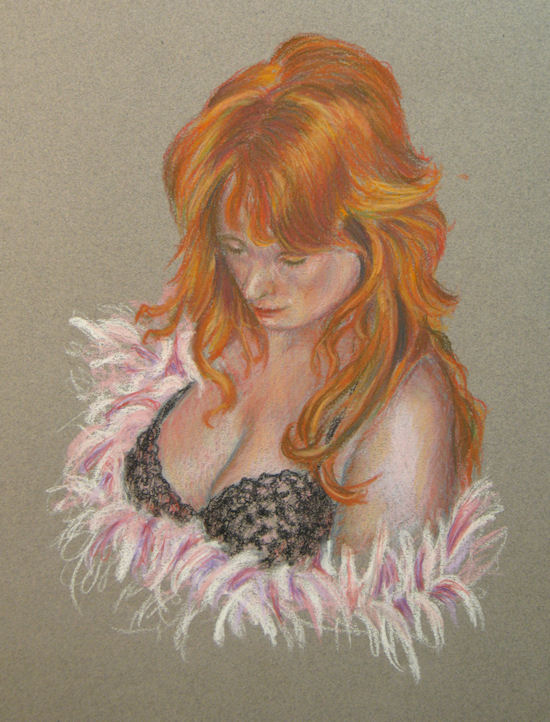 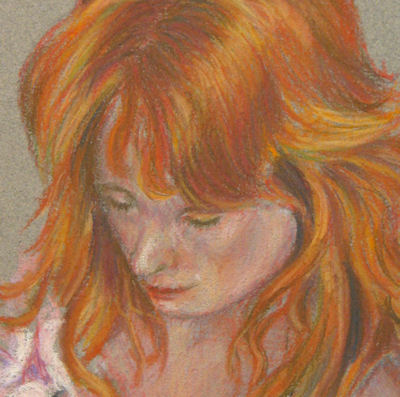 Monday, June 13 2016
I posted this blog right after I completed the painting, Michael Jackson as Blue Boy. However I have received so many comments and questions about it I've decided to repost it now. Hope you find it informative. I hope you will take the time to read below or at least skim over it and look at the progress drawings. Or you can go to the Completed Painting of Michael Jackson as Blue Boy. My painting of Michael Jackson as The Blue Boy was inspired by my fascination with the unending media attention given to Mr. Jackson's death. If you took the time to read the page with the larger image you would have seen the history of the original painting by Gainsborough as well as some of my thoughts about my version. If not I am repeating them here. Because the "The Blue Boy" is so famous, (At one point almost everyone's grandmother had a copy hanging on the wall. I know mine did.) I think it fitting to portray Michael Jackson as an updated version. Why? The boy originally was painted in very fancy dress not worn by his contemporaries. He was thought of as a "pretty" boy, and his image has become one of the best known by even those who know nothing of art. The painting and Michael have caused extensive media coverage and controversy..The painting and the man became larger than life with both always in the news. One other thought crossed my mind as I was painting. The controversy in 1922 was not about the young man in the painting but of the icon it had become. The newsworthiness of Jackson is now more about the controversial icon he was or is rather than the musical wonder he was at one time.
What I will attempt to do here is explain my painting process and some of the thoughts I ha 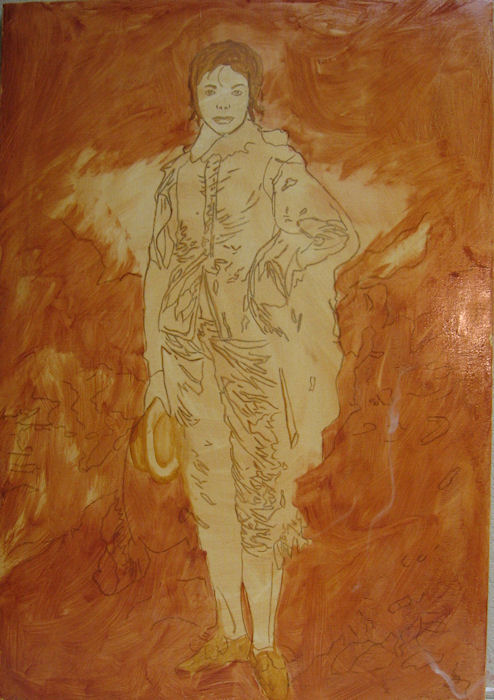 d as I worked. Much of this is in technical, painter terms. You may find it boring, but I'm asked by many of my followers, both painters and partons, to do this when I can. I'm told it gives a better and deeper understanding of my work. (Then there are those who say, "Just shut up and paint. Let the image do the talking.") d as I worked. Much of this is in technical, painter terms. You may find it boring, but I'm asked by many of my followers, both painters and partons, to do this when I can. I'm told it gives a better and deeper understanding of my work. (Then there are those who say, "Just shut up and paint. Let the image do the talking.")To begin I used the Internet to research as many photos as I could of Michael at various stages of life and in various clothing. I admit, I didn't know much about him when I started. I actually knew much more about the original painting then I did of Michael. I knew I wanted to add the face, glove, hat, shoes entrance to Neverland but wasn't sure exactly which face I wanted to put on it. At first I had decided to use one from what might have been is more productive time and where, I think, he was his most good looking. Finding photos of the original Blue Boy painting was, of course, very easy. Once I had all the reference material I did a number of sketches until I had the drawing, full size, 32 x 22 I wanted. I stretched a canvas of Belgian linen and prepared it for the initial toning of the ground. I toned this ground with raw sienna. I then traced the drawing on the canvas. The next step was to go over the tracing with darker raw sienna and block in the background with more of the same and some burnt sienna. 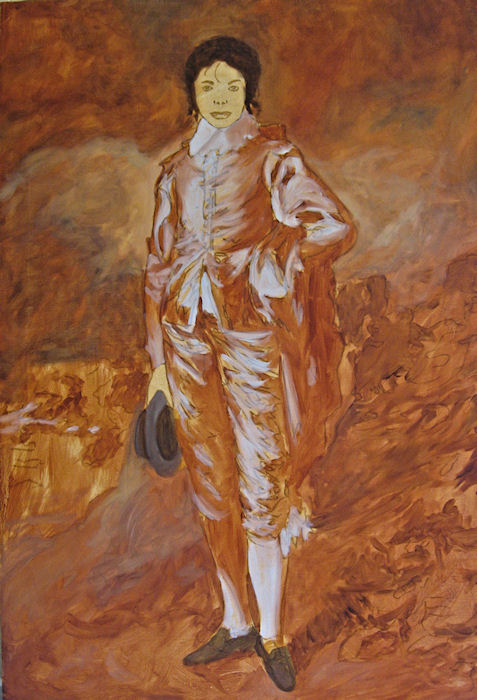 You can see here where I had chosen a much younger face than the one I ended up painting. These stages dry quickly so I can paint again the next day. The next stage was to add some highlights of a weak white and the shadows with a deeper burnt sienna. Here I also added some darks for the hat, shoes and hair. Once I have this much done I can sort of "see" what I want to do and how to proceed. Up to this point even if it might look as if I were very sure of what was going to happen I often find when I get here something very basic is very wrong. Not the right size canvas, wrong size image for that canvas, lighting balance or center of focus will never be right. Of course, in this case, I really didn't have to worry too much since all the real work was done for me by Mr. Gainsborough. 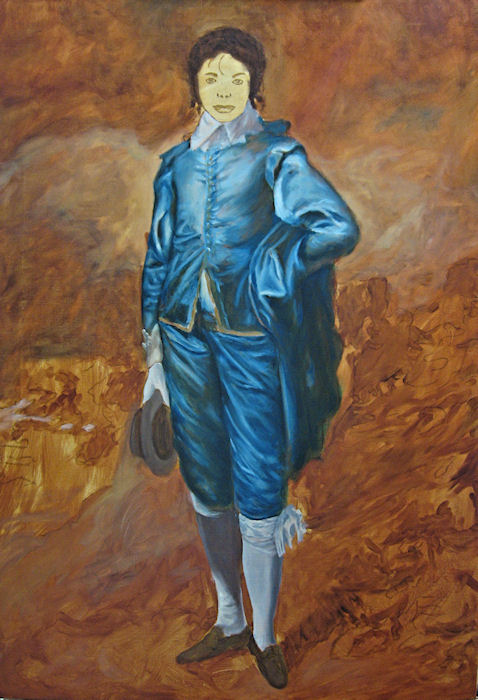 Next comes what I call the local color. Surprise! Blue. From the beginning I had intended to make my version more colorful than the original and use a brighter blue as well as more warm tones in the background. I wanted more color and chromatic contract than in the original. The original is rather muted but I admit I have never really seen the original in person so I'm not sure what it is for real. In any event I put in the blues using prussian blue, (one of my favorites). I also worked on the background here using combinations of prussian blue, burnt sienna and yellow ochre. I was still keeping things light and mostly just defining shapes and shadows. When this stage was dry and ready to proceed I started to worry about the face. I even went so far as to print various photos the exact size and cut them out and paste them on the painting. I change them over and over not quite sure what I wanted. I finally decided on the later face with the longer hair or wig. I felt it added more drama to the image with that sad, almost sterile face with so little expression. I also think it helped to show what I thought was so sad about all this. Here was a very talented man, capable of and did dominate the musical entertainment world for so long and was loved by so many but still all his life felt there was something wrong with his appearance, never feeling he was what he wished to be. 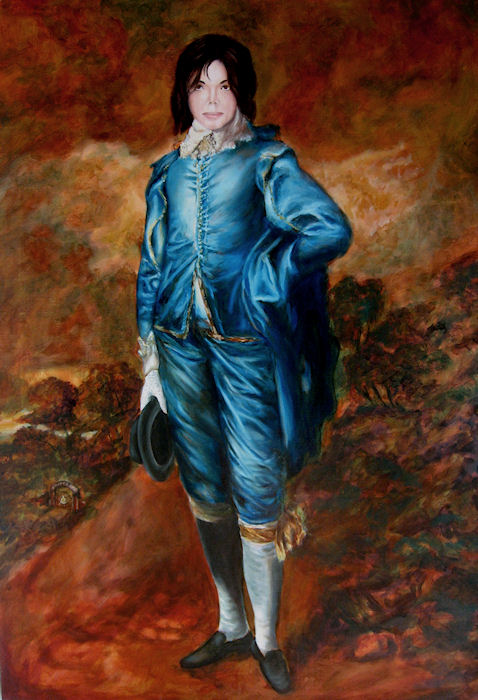 With the next stage I worked on bring up the background to a stage nearing completion. I added the little Neverland entrance brought down the colors of the sky and the land a great deal with the same colors as earlier and I added more depth to the clothing with more of the same colors and some Ultramarine added. The shoes hat and hair were deepened making a black from the blue and burnt sienna. Very little white was used. Only a bit in the sky and some weak versions for the highlights of the gown and socks. The most white was used in the creation of the sequined glove. With the next stage I worked on bring up the background to a stage nearing completion. I added the little Neverland entrance brought down the colors of the sky and the land a great deal with the same colors as earlier and I added more depth to the clothing with more of the same colors and some Ultramarine added. The shoes hat and hair were deepened making a black from the blue and burnt sienna. Very little white was used. Only a bit in the sky and some weak versions for the highlights of the gown and socks. The most white was used in the creation of the sequined glove.Once the face was roughed in using my traditional flesh colors, vermillion, yellow ochre and cerulean blue with white I added some of the details of the eyes with my made up black and a deep brown from the same colors. At this point and from here on out most of the work is very subtle using glazes. For those interested, many paintings are done with the colors applied thick enough so other colors don't show through them. This gives a painting a very strong and solid look. Other painters, such as myself, prefer to use what are called glazes. This is the application of very thin layers of transparent color over other colors to create a new color by way of the eyes interpretation of the optical effect. Many if not all of the old masters used this and some such as Leonardo used it almost exclusively. To see the final image please go to this page of Final Image of Michael Jackson. There you can also see details of the face and Neverland. Saturday, June 11 2016
I have learned that many of my patrons, students and friends enjoy visiting the studio to see the works in progress so I have developed the habit of photographing most of my work in the various stages. The images and story below are an explaination of the process of painting, "Ursula" (Her real name is Heather, but that is a different story.) a nude done from a combination of photos taken of my model and working from life sketches of her. I seem to have lost the sketches but this first image is of the early stages of the painting. The original canvas was about 30 x 20 inches as seen in the image to the left. The image to the right was after I realized I had too much blank area and restretched it to 22 x 18 inches.
I don't have images of the very beginning stages of this painting but if you have seen some of my other posts you know how I start and proceed to get to this point. I usually paint the figure in very pale grays and whites just to establish the basic shadow pattern and facial expression. The background is brough up beyond the figure and in this case the jug, (the ceramic one) is also kept as a pale underpainting. I like the detail in the orienta rug and in the vase in contrast to the simplicity, softness and smooth flow of the woman's skin. Warm soft rug, hard cold vase and soft cream like skin of a woman.
In the next phase (image to the left) you can see I decided to change the hair and make it longer and flow over her shouders. At this point I also brought the skin up some and worked the background into deeper colors and more details. This is true of the vase to some small extent. With the image on the right above you will see the skin is again much more defined but still cool colors of blue and green grays. The expression on the face is more complete as is the hair and the background is almost as dark as it ever needs to be. From here on it is painted almost exclusively with glazes. (thin layers of transparent oil paint) This gives it a deeper and richer look in the shadows and allows me to create colors by overlaying one transparent layer over another to give a final effect that can not be achieved with opaque paint. The final painting below is 22 x 18 inches. Not much more to say. I hope the final painting will speak for itself. Purchase information about this painting can be seen at: "Ursula"
Monday, June 06 2016
This is a pastel measuring, 24 x 18 inches. "Pastel Nude In Pink Drape."
This was done from a combination of photos of this model and her posing for me as I worked after about half way done. This is a very common way for me to work on pastels or oils. I had only done one painting of this lovely girl when I did this one. I knew I was going to do a number of paintings of her but with the first one I struggled with her fair skin tones. It was important to be correct with that wonderful red hair. That was what drove me to do this piece. I think from it I was able to learn enough to go forward with the other paintings. I often do pastels of models to learn more about the colors needed to properly get the skin tones. I also enjoy doing them because they go faster than the oils. This one was done almost exclusivly with pastel pencils and is on toned paper. Many times clients request pastel portraits instead of oils, not just because they are less expensive, but because they have a certain drawn quality to them many prefer. I also added a closeup of the head just to show the technique and color a little better. I can't say for sure but I think I only used about a dozen colors for the whole thing and that is very rare for me. If you would like to see a larger image please go to, Pastel Nude in Pink Drape.
Sunday, June 05 2016
Most paintings of mine have a story and some are more interesting than other. They all seem to have something to do with my past and my present. What I felt then and what I feel now. A few years ago I went through a very devastating breakup. I was the one devastated, not her. It sent me into a very depressed period, which, I'm happy, note; very happy to say is far behind me. Now being much wiser and with a very thick skin I can paint from a good place but for a while everything I did was dark and wrapped in sadness and loneliness.
All this thinking made me go back over my life and look at all the mistakes and how I got to where I was. Where I was, was very alone and on top of that almost broke. I hadn't shown work or sold to anyone but my old patrons in some time. To be honest, I really don't know how I got though those few months or much of what took place. During the ruminating over my past I went back over how I became a painter and when did I start doing working to be a painter. Although I had always been a child that drew constantly it wasn't a career. I went to a small community college more because my mother insisted than any other reason. Since I had always drawn she got me into a program of art and advertising. The art classes there were not much more or even as good as most that are in any high school now. I graduated and went to work for the New York Library System, as an illustrator, but was really not much more than a printing press operator. I was living at home and had a large bedroom with a sort of studio/office in it. I was there one weekend night, alone in the house. I found some old paints of my mother's that were mostly dried up and an old canvas board about 16 x 20 inches. I had an easel I brought back from college so I decided I should paint something to show I was really an artist. My parents always billed me as this trained painter now with a job in the art industry. Wow, what a stretch. I remember going through the tubes of paint and finding there were only two tubes, burnt umber and yellow ochre still soft enough to use. The only medium I had was turpentine. I set up the canvas on the easel and stood back to think of what to paint. Remember, this was the 60's. The art world was allover the place, but, it always is. At that age, I was 20; I decided to be an artist I had to be tragic. Well, I was, sort of. I wasn't in school any more; I was living at home and working in a boring job making very little money. I was stick in my hometown where the social life was limited to bowling or going to country music bars. Neither of which were something I could bring myself to do. I had no one in my life to really think about and knew I had to get out but didn't know how. I guess I was tragic after all. I just started painting. What I did was this dark tree on the left with one branch. Below the branch was a big hole in the ground. Standing over this was a figure looking into this hole with complete despair. This was all done in just the deep yellow and the dark brown. All sort of abstract and no very good. No, really bad. That was my evening and I never did go back to it. It sat on that easel for a very long time and then next thing I knew I was being drafted into the military. Well, things did change.
I put up a stretched canvas and went to work using my swirly style of painting. I wanted the same basic composition but with a bit more skill and color. What you see here is the result of one long night of painting. I thought of it as nothing more than a release and a sort of tribute to my start as a painter. A week or so later I had my grandsons over for the night. They always liked to see what I had been painting and always had an opinion. My youngest, Evan, sometimes asked why I painted so many naked women. He thought it was disrespectful. Yes, he was only 5! It did make me think. My older, Michael, was the deep thinker both then and now. He is a very sensitive young man. He stood and stared at my new painting and asked me what the name of it was. They always liked to name the paintings. I told him I didn't have a name yet. He took a few more moments and then said, "I think you should name it Strayed Path." Why, I asked. He replied it looked as if the person in the painting had lost his way and didn't know where to go. From the mouth's of babes. It did make me think and I was amazed he could see that much in there. I don't know if that is a tribute to my painting skills or just darn lucky with a very observant young man. I think the latter is more likely. The painting is still around and when I look at it now, I don't think so much of my depression at that time or the woman that caused it. I don't even think much of the reason or the origin. I really only think of my grandson and somehow he is connected to me now and is a part of who I was way back when I was 20 sitting in my room alone and wondering what to do with my life than. Still wondering about that but I like to think I have learned a great deal of life. You can see the painting, Strayed Path here, and Alone with Thoughts here. I'm still painting, and most of them are of beautiful women. Now days always with a high heart and healthy excitement. My grandsons are older now, and seem to accept me as the painter of beauty as I see it. Saturday, June 04 2016
This is another painting I started some time ago but was never quite right. It is an oil on canvas, 16 x 20 inches. Recently I went back to work on it to give it more color depth and a stronger sense of my swirls. What I am trying to do here is create a sense of nature but avoid realism to, I hope, make the experience as well as the appreciation of nature more intimate. The trees in the forground are evergreens but with colors beyond what nature might have chosen. The trees in the distanct center are very much unnatural yet here I am trying to draw the viewer into the patterning of the overall composition more the depict anything one might see while wandering in the woods. The objects in the forground to the right are nothing like I have ever seen in nature but I think might give the idea of flowers or tall grasses that are fun to observe.
I can still see her in my head when I look at it but do think it is better without her there. More my muse just imagined by me. To view a larger version and pricing information, [click here] Tuesday, May 31 2016
My painting called, "Classic Elegance" was completed a few weeks ago. I've been so busy with new work and teaching art classes it has taken until now to write about how it came to be. It all started about three years ago when I did a sketch of a lady I knew rather well, and loved the poem, "Ode on a Grecian Urn" by Keats. It has also always been one of my favorites. She posed in my studio for it but not in that setting, of course, nor in the gown. Actually her hair wasn't anything like that either. I guess she was the muse who gave me the initial idea. The painting is 36 x 24 inches in oils and was started from various small sketches. I drew the painting on tracing paper and then copied it to the canvas which I had toned with a pale cerulean blue wash. I than did an underpainting in white and cobalt blue. The next day I gave the chair a glaze of purple, the hair darkened with burnt sienna and cobalt blue, and the skin a thin glaze with a pink from cadmium vermillion and naples yellow. The flowers were tinted with a pale cadmium red glaze.
A few months ago I ran across the poem again. I also found myself with a new muse. That made me think of the painting so out it came. By this time I had different colors in my mind and in most of my work. I did drawings of the column and of the urn. I traced them on the painting. I then went at it with the new more vibrant color scheme. I added the background in what might be a simple sort of "Klimt-like" patterning. I added the imagery to the urn as part of the Keat's poem. The part where the two lovers can never complete their kiss but will always have that same longing and antisipation. Love will endure. Most of the painting, after the drawing was done and the new items roughed in with semi-opaque paint, was done with glazes. The figure, always the most important part for me, was done with various layers using my three standard colors for skin, cerulean blue, naples yellow and cadmium vermillion.
Sunday, March 13 2016
The painting above called, "Grandma's Kittens" is one I did several years ago of three kittens sitting in what was my grandmother's favorite rocking chair. It was 20 x 30 inches and done in egg tempera. The painting method of today's discussion. Egg Tempera is a painting medium used throughout art history. It was the primary painting method used from the first century CE to about 1500 when oil painting took center stage. This is a painting medium consisting of colored pigments mixed with a glutinous material such as egg yolk. This isn’t to be confused with the paint called “Tempera Paint” used in school more commonly called “Poster Paint” which is made with different glues and sizes. Egg Tempera, most often called just “Tempera.” is most often painted on hard surfaces such as wood panels or in modern times in such things as untempered Masonite. The origins of tempera painting can be found as far back as on Egyptian sarcophagi. It took over as the medium of choice from “encaustic” painting, (using heated beeswax, more on that some other time) throughout the Byzantine world and Medieval and Early renaissance Europe. Tempera paintings are created by mixing the colored dry pigments with water and then adding small amounts of egg yolk to the mixture. This paint is applied to an absorbent surface. This surface is most often created by coating the panel with a form of “gesso.” This gesso is made by combining chalk or gypsum with a glue, most traditionally a rabbit skin glue to make a brush able thick paint with which to coat the panel. The tempera paint is applied with brushes. The amount of egg yolk used can control the transparency as well as the drying time of the mixture. With the use of just water with the egg it dries very fast. At times something like vinegar or even wine is added to the egg yolk to slow down the drying time. The paint is applied in thin glazes or with small brush strokes since it will dry quickly. Unlike oil paints it cannot be applied in thick passages or with thick oil layers so the colors do not have a deep color saturation and do have a matte finish. The final work is water resistant but not waterproof. Some of the famous painters and paintings done in tempera are: All surviving panel paintings by Michelangelo are in egg tempera. (late 1400’s to early 1500’s)
I have painted may egg tempera paintings. Some are shown here. Mine were done in untempered Masonite with I prepared with the traditional method of home made gesso. I used dry pigments mixed with just enough water to make them a soft paste, and then added small amounts of egg yolk to each painting mixture as I painted with it. I used both glazing techniques as well as small brushes to do a cross hatching to build up depth and paint colors.
Sunday, March 06 2016
This is a continuation of the blog I posted last week. I realized there was just way too much going on around the time Leonardo painted the “Mona Lisa” to not expand on that time period. So here is a bit more: It was in the year 1504 that Michelangelo completed his marble statue of , “David.” The statue stands 17 feet tall. The marble block from which it was carved had a long history of not being worked on, but finally the contract was given to Michelangelo who worked on it for two years. It was in 1505 that Michelangelo was summoned to Rome by Pope Julius II. This started a relationship that lasted 40 years. In1508 he started working on the Sistine Chapel which took four years to complete. He painted it standing up not lying down as some stories tell. It is a fairly well documented fact, Michelangelo and Leonardo didn’t get along. They were completely different types. The fist was a stone mason first who worked long hours alone, and didn’t have many social skills. Leonardo, on the other hand, enjoyed the finer things in life, and even though he was always working and experimenting, he did use his talents to further his position in various courts. The third of what is sometimes called the “Great Trinity” of artists from the High Renaissance period is Raphael. (1483-1520). Even though he died at a young age he left a large body of work, probably because he ran and very large workshop. His masterpiece or best known work is his, “School of Athens” painted between 1509 and 1511. It was painted for the Apostolic Palace in the Vatican. It portrays Philosophy. It is said to portray all the great philosophers from antiquity. However, there is no real way of telling who is who. The only ones known for certain are at the center. They are Aristotle and Plato. There have been many speculations as to the meaning of the positioning and posing of these figures.
Raphael, School of Athens
Michelangelo, Sistine Chapel. Some other things around this time: 1487 - In Mexico the great temple in the Aztec city of Tenochtitlan was dedicated. A ceremony that may have lasted from 4 to 20 days it is speculated as many as 20,000 people were ritually executed by having their hearts sliced from their bodies. From about 1496 until the middle of the 16th century approximately one million people contracted what was called the “French Pox” because it was first seen in French troops stationed in Italy. The disease was actually syphilis. It was most likely brought to Europe by sailors returning from the New World. In literature, Niccolo Machiavelli wrote “The Prince” in 1513. This work has become famous as what some call the first work of modern political philosophy. The essence of his writings is in very simplistic words, “Any methods, no matter how immoral or untruthful, justify the end of winning the post desired.” Playing to the ignorance and fears of the public is a quicker route to success than taking any moral high ground. These writings might be something important to think about during modern elections. 1492 was also the year the Spanish took over Granada in Southern Spain. This ended the near 800 year occupation of Islamic Moorish rule in the Iberian Peninsula. During the Moor’s rule of the city of Granada was famous for its intellectualism and religious tolerance with Arabs, Berbers, Christians and Jews living in separate quarters. With the conquest of the city by Ferdinand and Isabella’s troops this ended. What started was the beginning of the Christian persecution of heretics, namely Muslim and Jews, which became known as the Inquisition. In 1517 the Ottoman Empire was fully established and then controlled the Middle East and Egypt. This gave them control over the “spice route” which was in conflict with the Portuguese. About this time the Portuguese fleet arrived in China with the idea of opening up trade routes. However the Chinese considered the Europeans uncouth barbarians so not much came of the encounters. I think that is enough for today. I’ll be posting more next week about this time. Maybe next week we will look at some of what is known as Byzantine art. When, what, why, how. Sunday, February 28 2016
This post as well as many to follow are going to be a little of art history along with some world history to give the reader an idea of what was going on in the world at the time a famous painting was done. The idea of these posts comes from talking to my students about art, and learning many of them really don’t know what was going on in history around the world at the time paintings were done. I think knowing these things makes for a deeper understanding of the paintings. I think the best painting to start with might as well be the most famous. No, it isn’t one of mine. It is, of course, the Mona Lisa. Leonardo da Vinci painted the Mona Lisa, in 1503 to maybe 1506. (There are always some arguments about these dates as well as some of the other facts but I’ll do my best to go with the majority views.) It is a half-length portrait of a lady named, Lisa del Giocondo and was commissioned by her husband. The name, Mona Lisa, is from the Italian name for what was originally “ma donna” or my lady but was shortened to Mona in time, and most often in Italian as Monna Lisa. It is painted on a wooden (poplar) panel and is about 30 X 21 inches in size. I won’t go into a lot about the painting. That can be found almost anywhere on the Internet. The purpose of this blog is to place it in world history. So what was going on in 1503 or the early part of the 16th century? First it was painted in Florence, Italy even though it has lived most of its life in France, in modern history at the Louvre. This period in Western history is known as the Renaissance which went from the 14th to the 17th centuries. Some think it really started in Italy, Florence in particular, where the Medici family ruled, and promoted all forms of art and science. It was a period of humanism. Scholars studied text from the Greeks, Turks, as well as other from antiquity, and around the known world. Art: Linear perspective, the system for artists to accurately portray nature was invented by Filippo Brunelleschi (1377 –1446) in Florence.
Exploration:
Science: Saturday, February 20 2016
This is a pencil drawing done for a basic drawing class I taught a while back. The idea was to show perspective, with angularity of the basket , It was also an exercise in working with soft lines to show a gentle or subtle change in tone or value. It seemed to work for the class. This was done with on Strathmore sketching paper with a series of graphite pencilss, ranging from 4H, to 4B. It was done from a photo I had found many years ago. This took about four hours to complete. Monday, February 15 2016
Since it is now snowing and very winter I felt it was timely to post a few pen & ink drawings I just found. These were done a while back as illustrations for some book publishers as well as being used for a class in drawing. I have made these into small prints for anyone interested. These were done on a bristol paper with a fine point Sharpie. I first drew the basic shapes with a 6H pencil to create the composition then went to work with the pen. Working in pen and ink this way can be very relaxing and a sort of meditation when there is a great deal of detail. I recommend keeping them sort of small. Big is a lot of work. [grin] These are all around eight inchs on a side or near that. 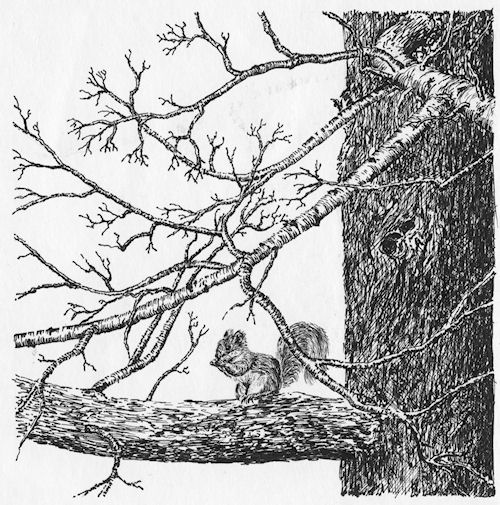 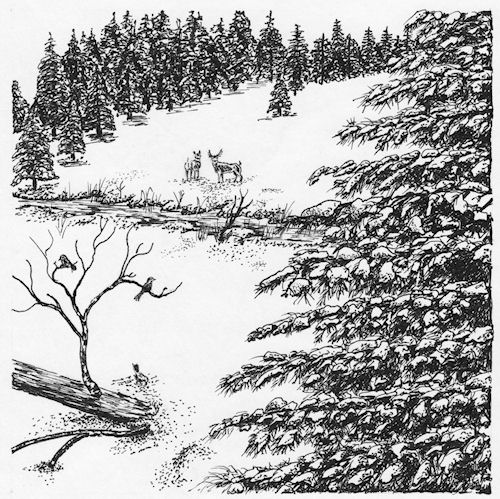 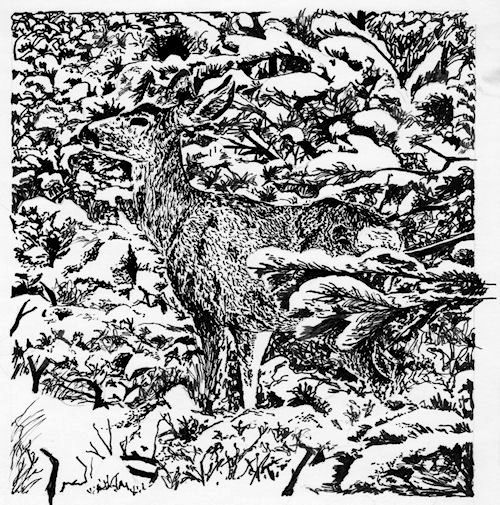 |
Site Mailing List
Sign Guest Book
View Guest Book
The portraits, paintings, prints and art classes of John Entrekin
John Earl Entrekin
Site designed and managed by Midair-maintence. All content is copyrighted by John Earl Entrekin, 2011
Build your own website
WebStudio Website Builder
WebStudio Website Builder






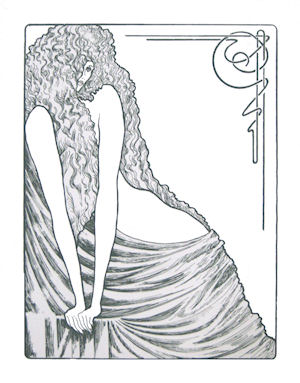
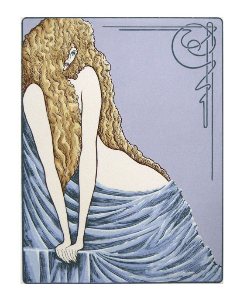
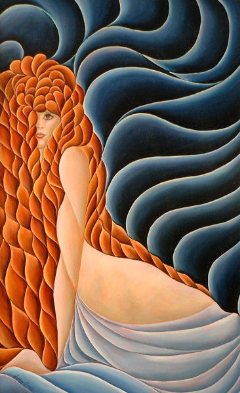
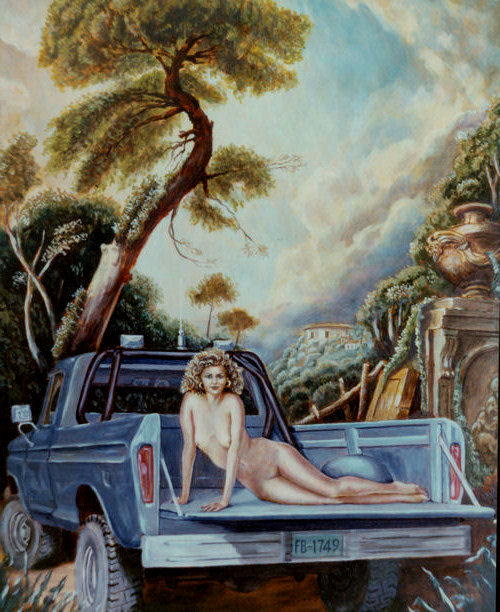
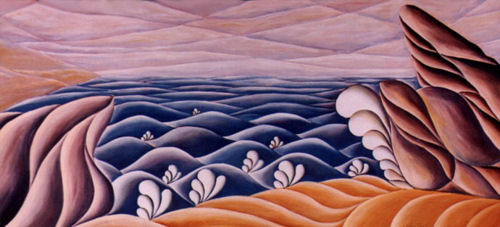

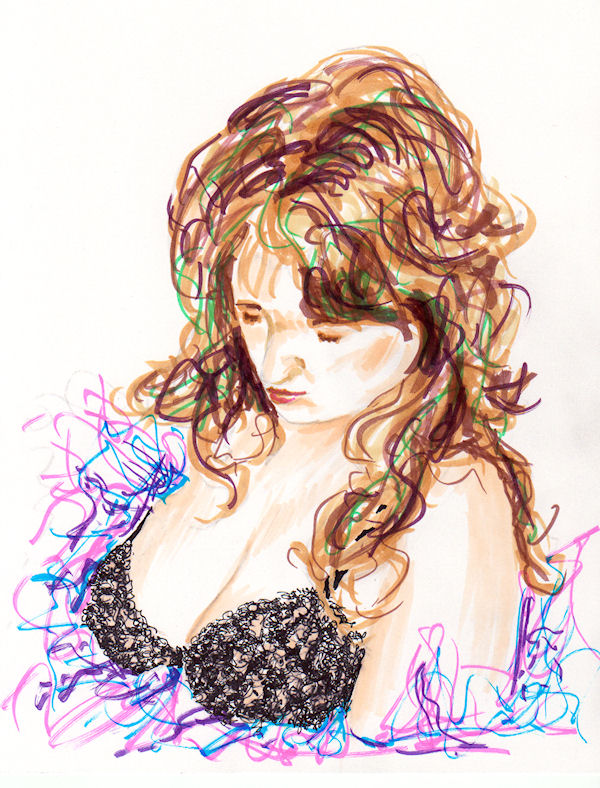
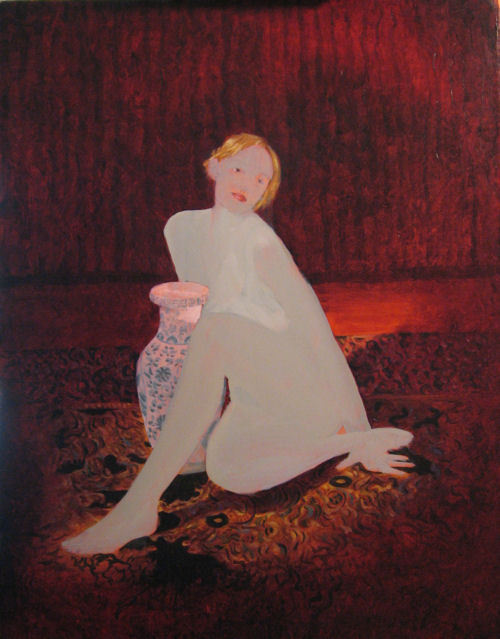
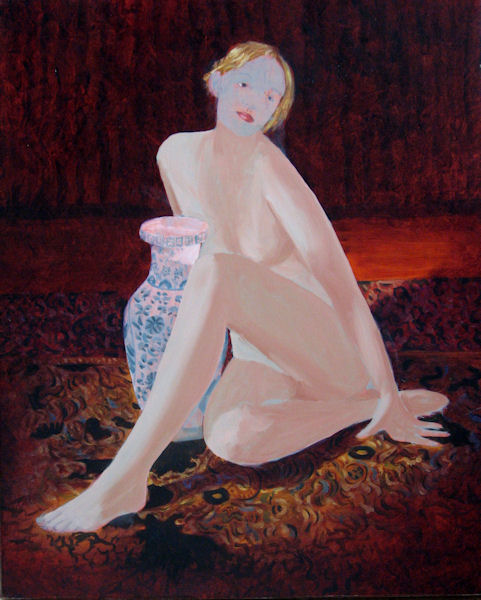
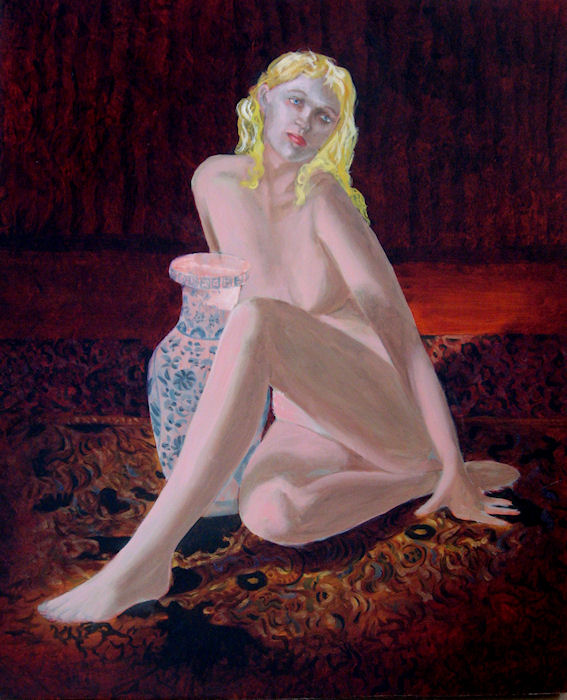
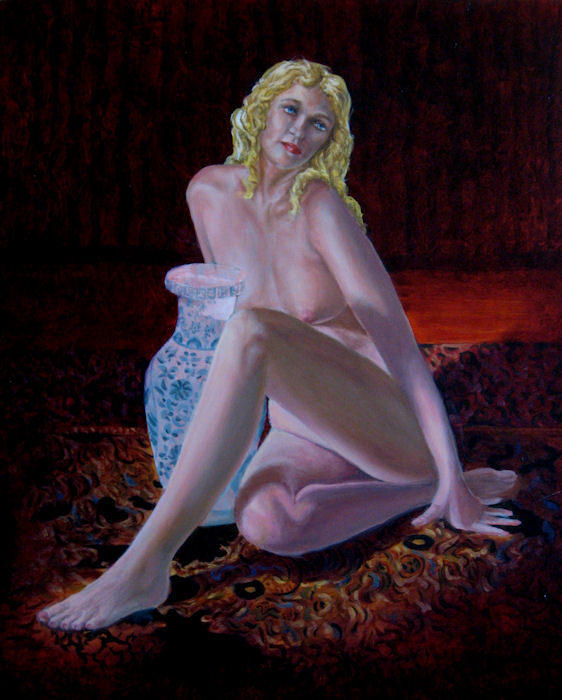
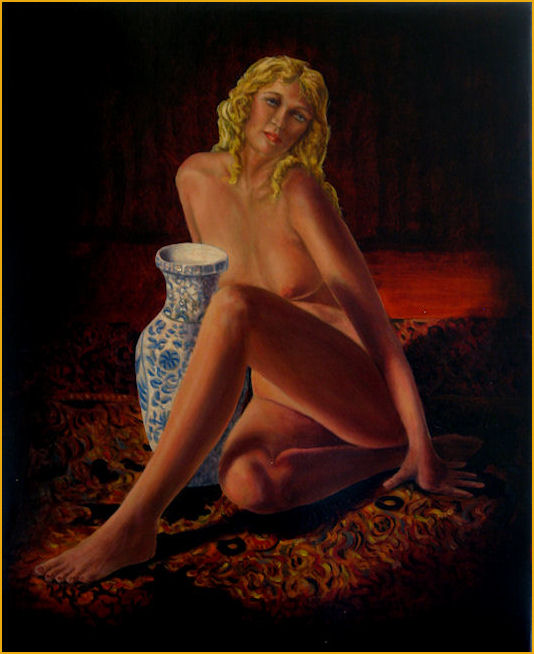
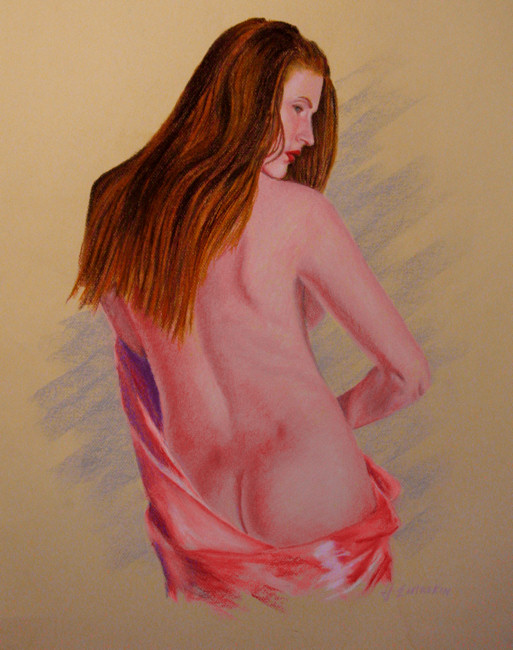
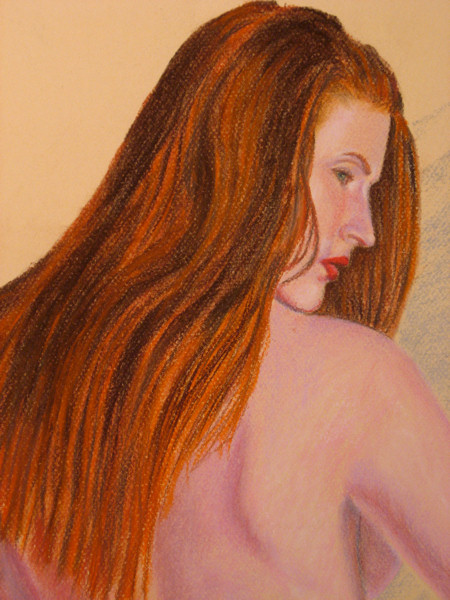
 One of my paintings that has generated a great deal of conversation is named "Strayed Path"
One of my paintings that has generated a great deal of conversation is named "Strayed Path"  Here is maybe the most interesting part. I was stuck with the whole thing at one point. I couldn't see it in my head, and had no idea how to porceed. A good friend of mine reminded me that my work has always seemed to center around beautiful women. She suggested I paint a young lady coming out from behind one of the foreground trees to give the whole composition more meaning to me. I tried it, and almost instantly I could see where to go. I finished the whole painting but then saw that the woman just didn't fit. So, I painted her out. [grin]
Here is maybe the most interesting part. I was stuck with the whole thing at one point. I couldn't see it in my head, and had no idea how to porceed. A good friend of mine reminded me that my work has always seemed to center around beautiful women. She suggested I paint a young lady coming out from behind one of the foreground trees to give the whole composition more meaning to me. I tried it, and almost instantly I could see where to go. I finished the whole painting but then saw that the woman just didn't fit. So, I painted her out. [grin]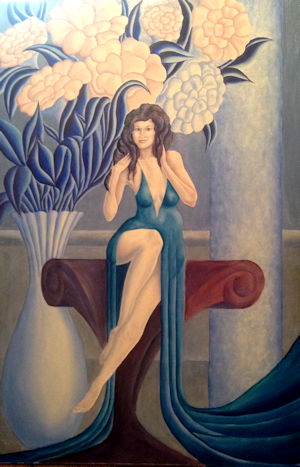 All this was done a few years ago. I didn't know how I wanted to proceed. Besides, I wasn't seeing the lady any more. [grin] So, I put it aside, and sort of forgot about it.
All this was done a few years ago. I didn't know how I wanted to proceed. Besides, I wasn't seeing the lady any more. [grin] So, I put it aside, and sort of forgot about it. 